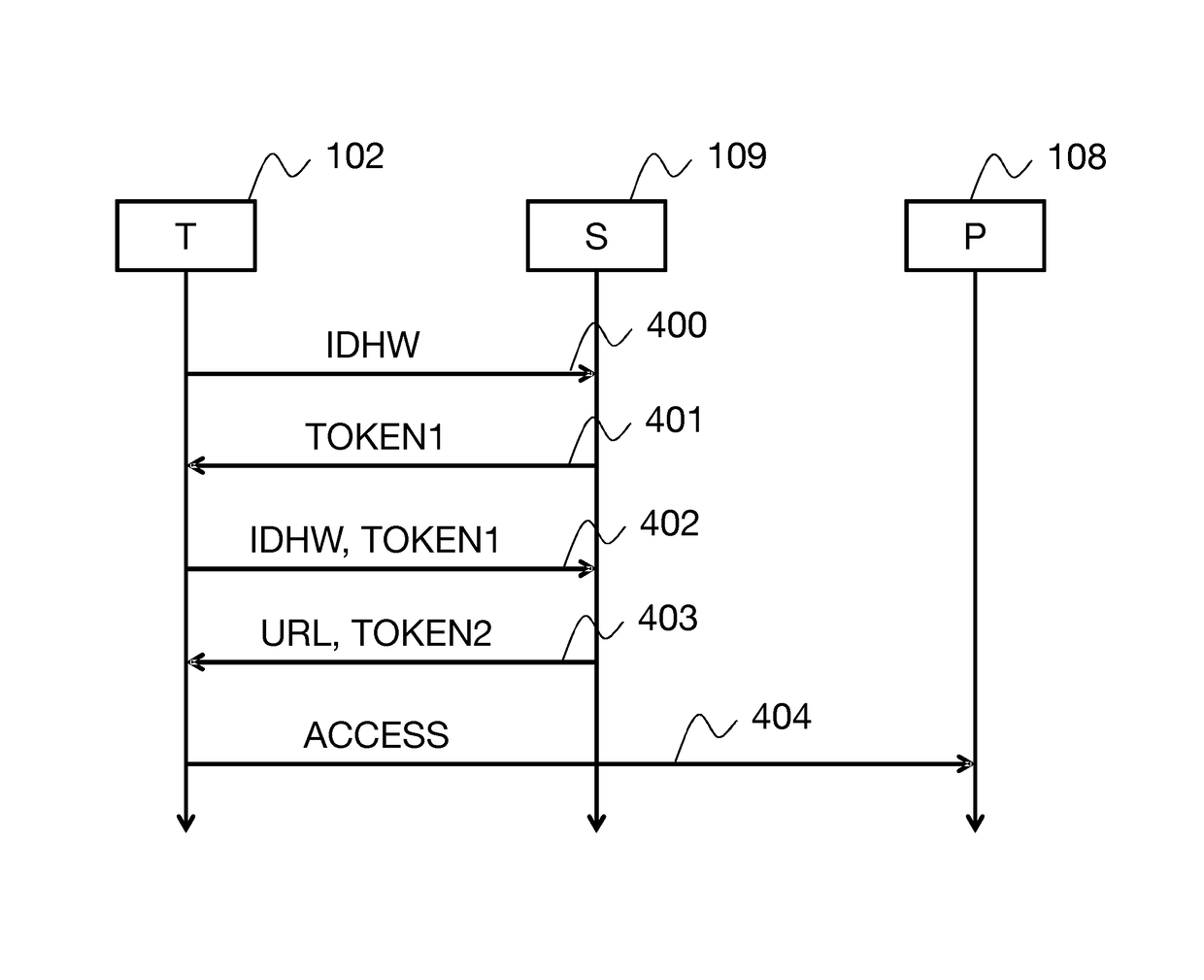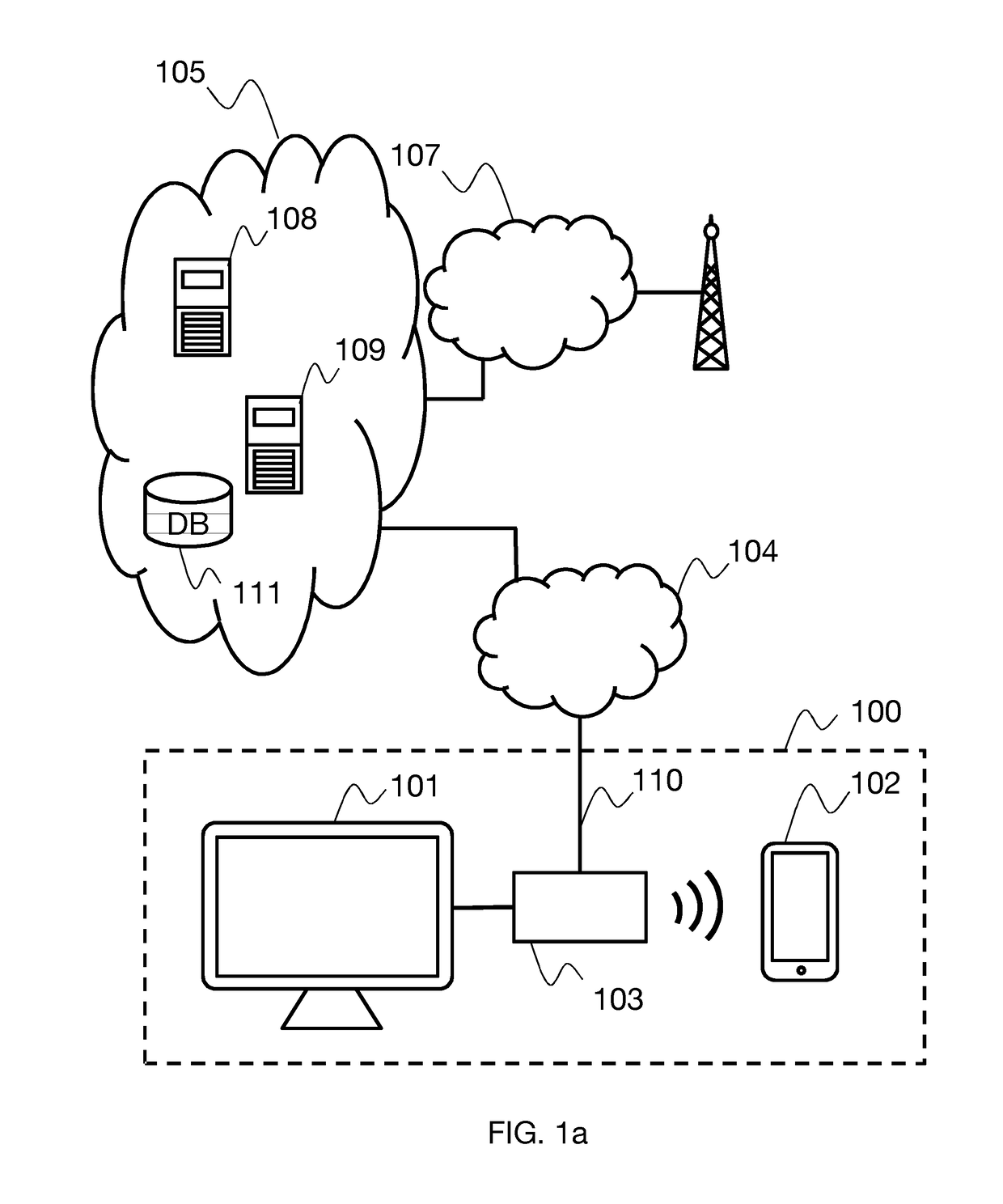Method of authentication by token
a token and authentication technology, applied in the field of authentication for accessing a service, can solve the problems of not being useful for meeting the new requirements of stakeholders, and requiring the implementation of complex systems on the part of service operators, and achieve the effect of simplifying the usag
- Summary
- Abstract
- Description
- Claims
- Application Information
AI Technical Summary
Benefits of technology
Problems solved by technology
Method used
Image
Examples
Embodiment Construction
[0041]FIG. 1a shows a general architecture suitable for carrying out a method of authentication by token according to one embodiment; however, it will be obvious to the person skilled in the art that additional components may be present or that some components can be combined in the same entity or, conversely, can be distributed among a plurality of entities. A home environment 100 includes a connected television 101 and a mobile terminal 102, such as, for example, a smartphone, suitable for retrieving audiovisual content broadcast over a communication network 105 by a content provider 108. The home environment comprises an access point 103, for example an ADSL router / modem to which the television and the mobile terminal are connected via a local network, for example an Ethernet or Wi-Fi network. The access point 103 enables the connection of the television and the mobile terminal to the telecommunication network 105 via a network access 110 and an access network 104. The communicat...
PUM
 Login to View More
Login to View More Abstract
Description
Claims
Application Information
 Login to View More
Login to View More - R&D
- Intellectual Property
- Life Sciences
- Materials
- Tech Scout
- Unparalleled Data Quality
- Higher Quality Content
- 60% Fewer Hallucinations
Browse by: Latest US Patents, China's latest patents, Technical Efficacy Thesaurus, Application Domain, Technology Topic, Popular Technical Reports.
© 2025 PatSnap. All rights reserved.Legal|Privacy policy|Modern Slavery Act Transparency Statement|Sitemap|About US| Contact US: help@patsnap.com



